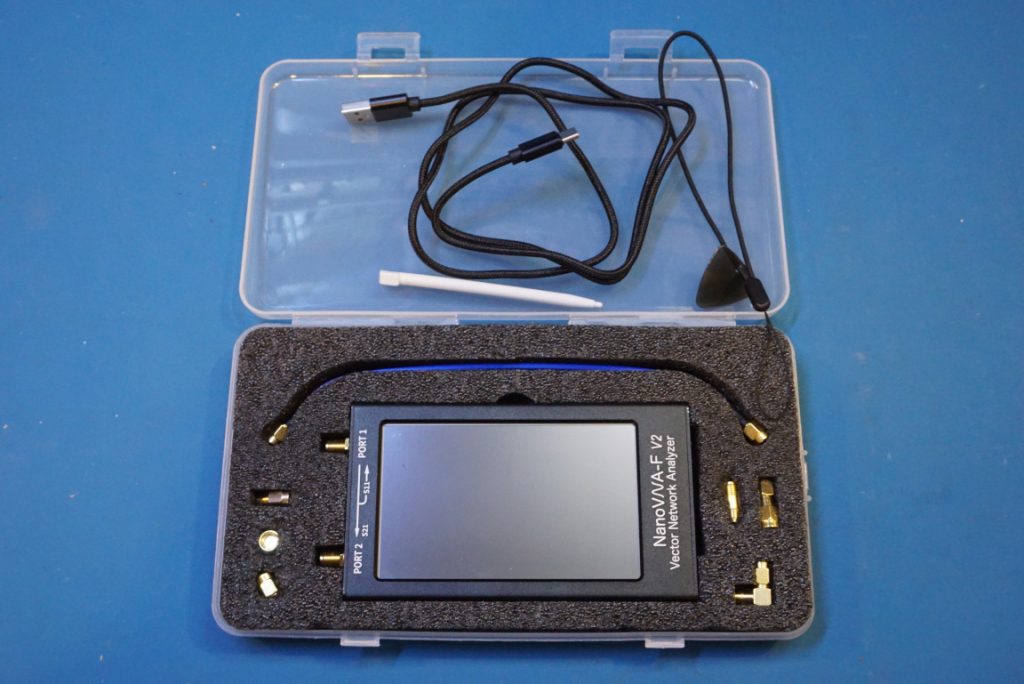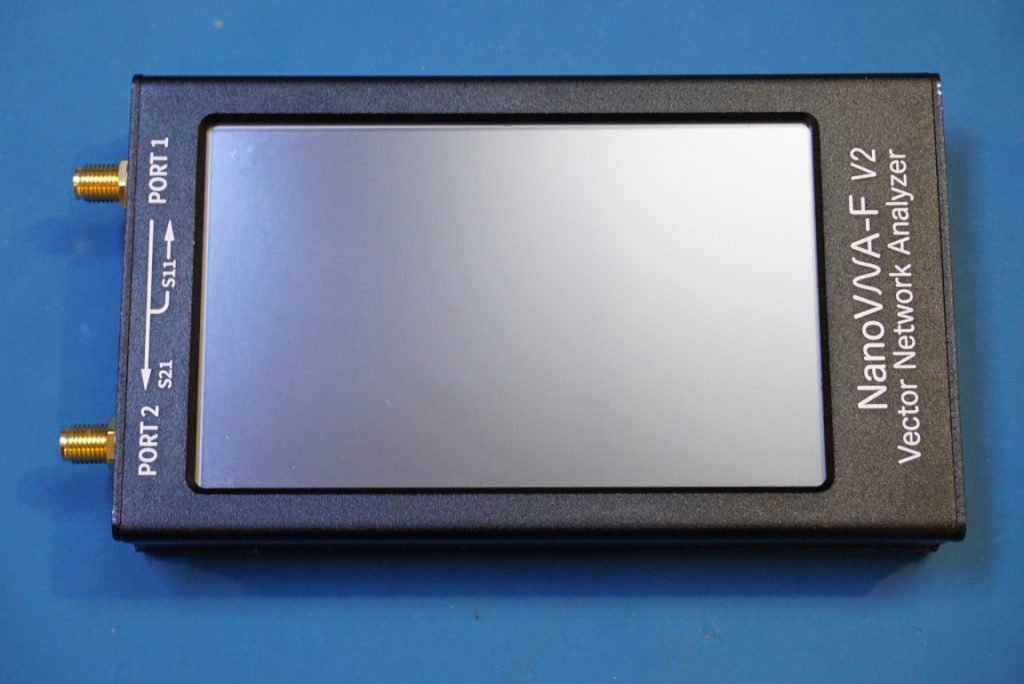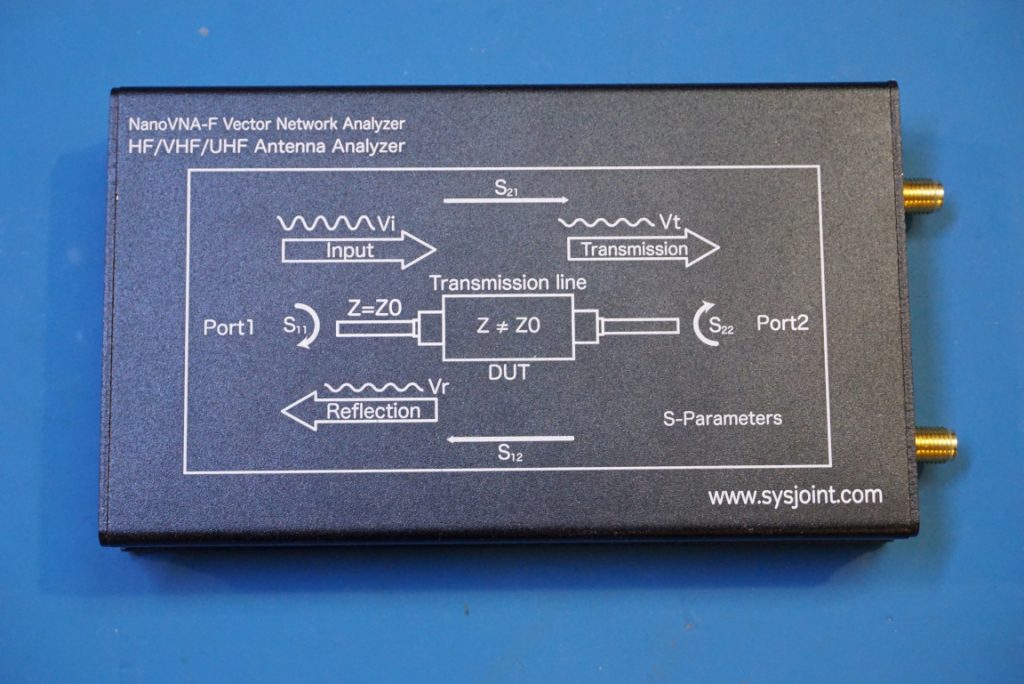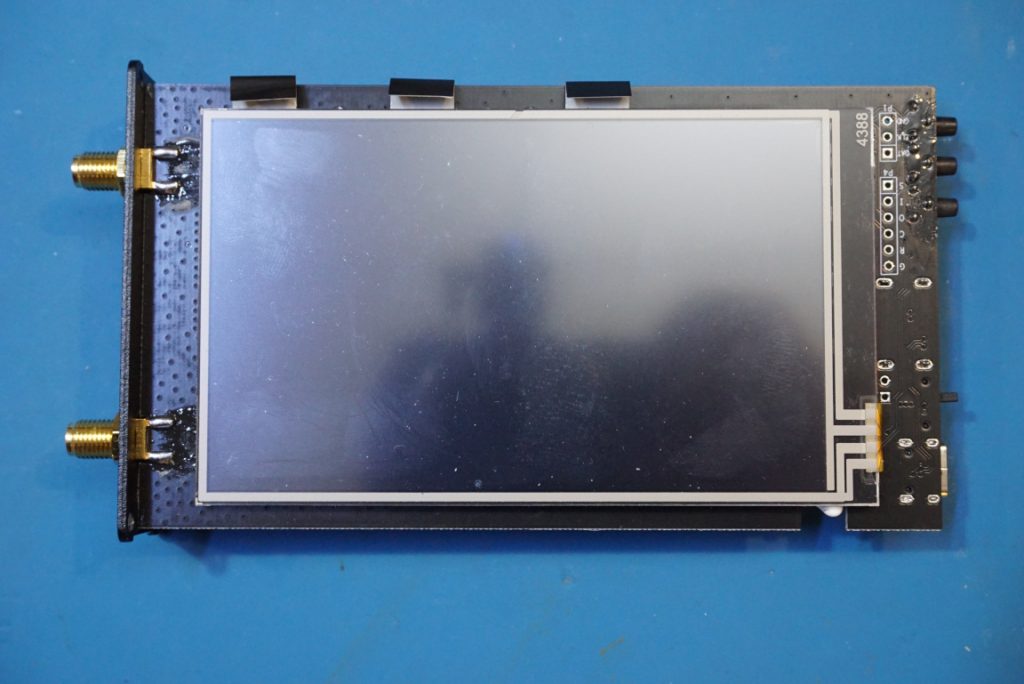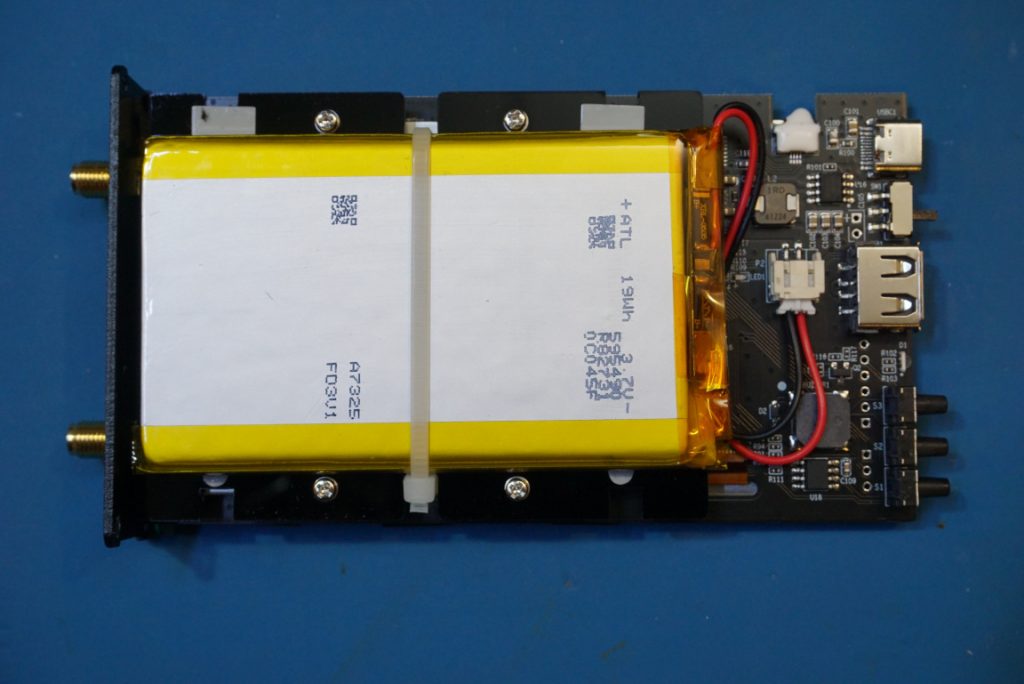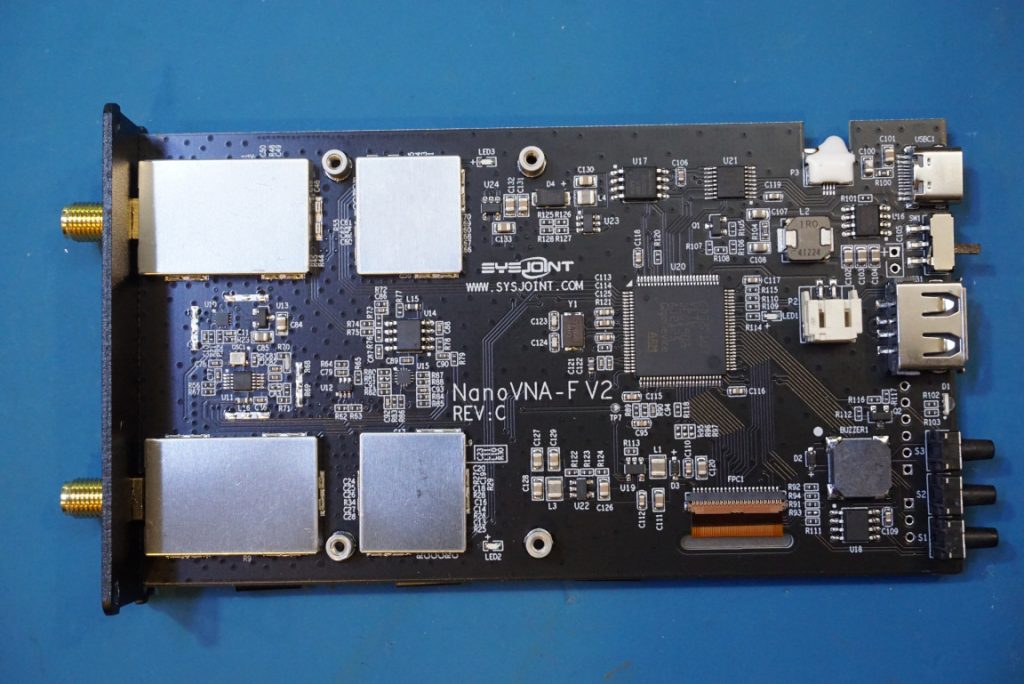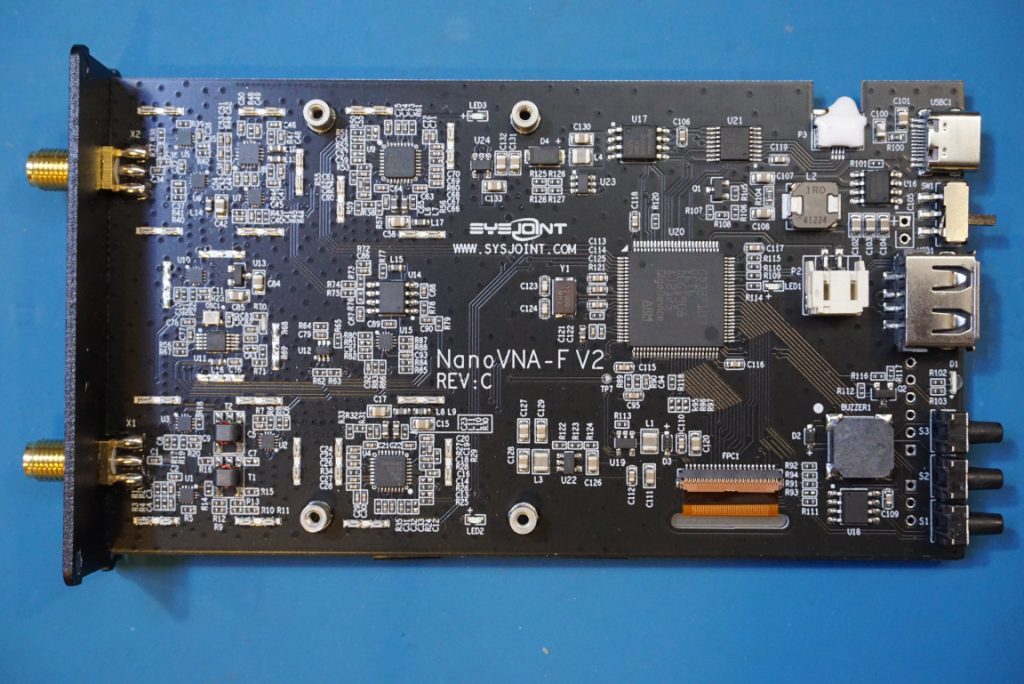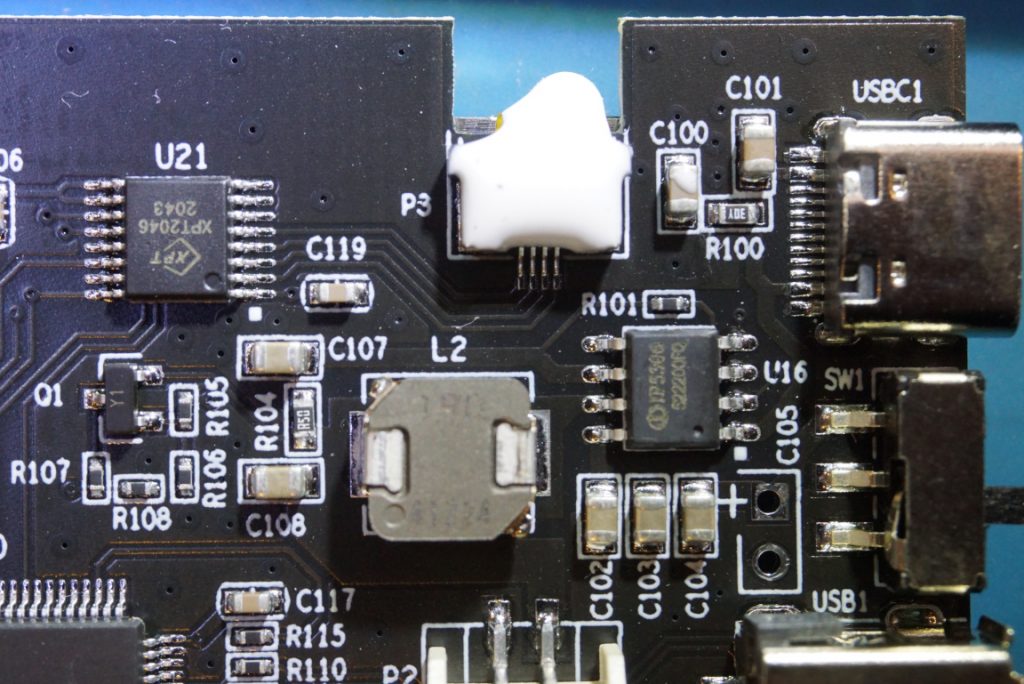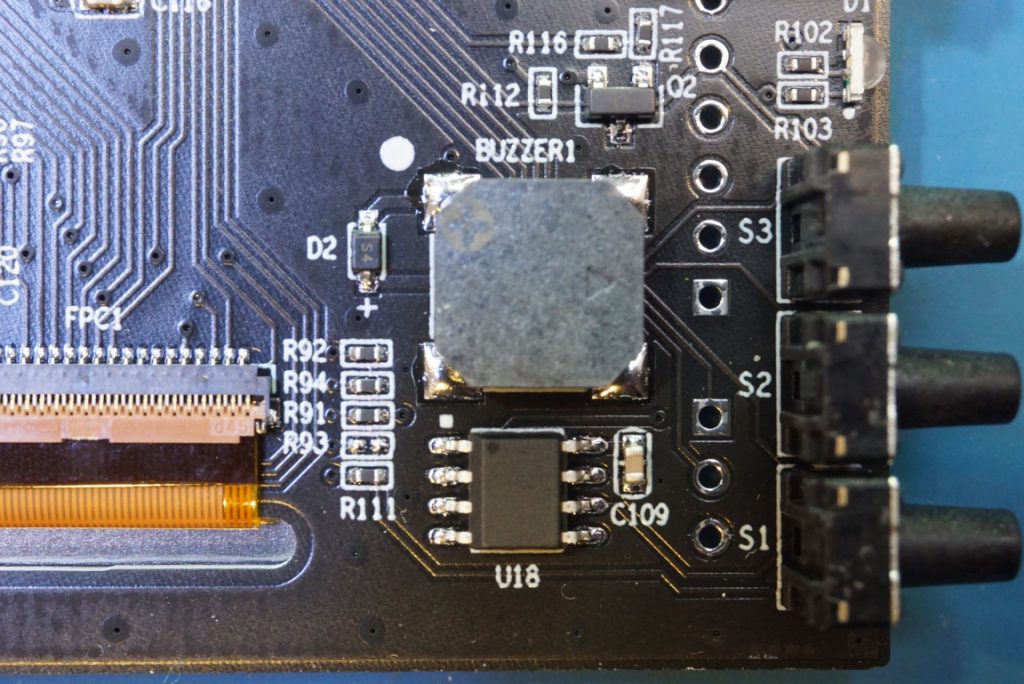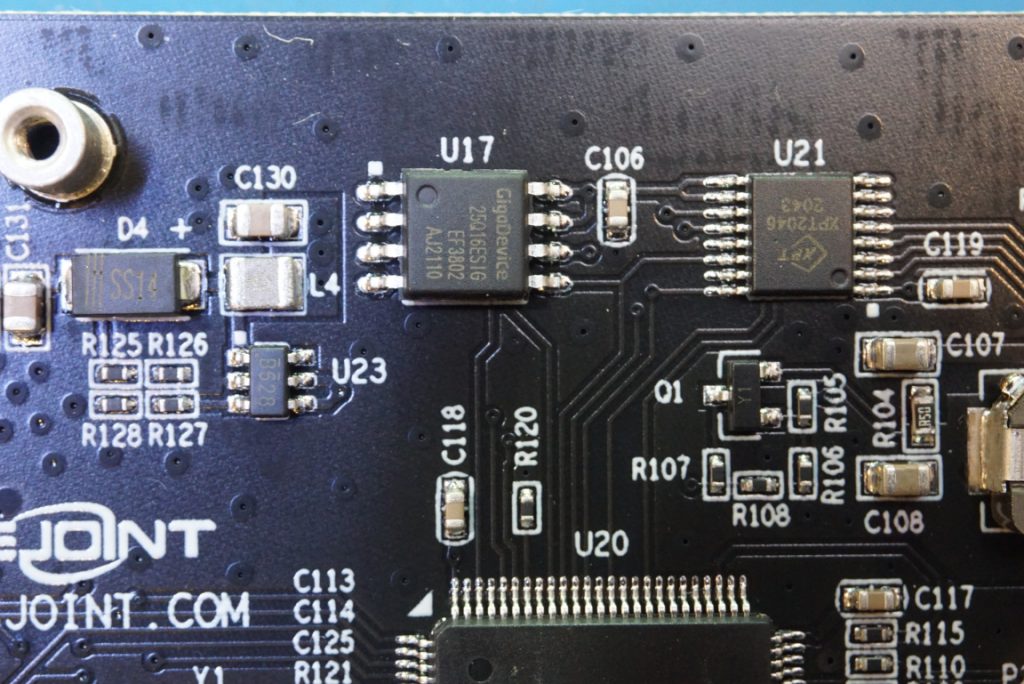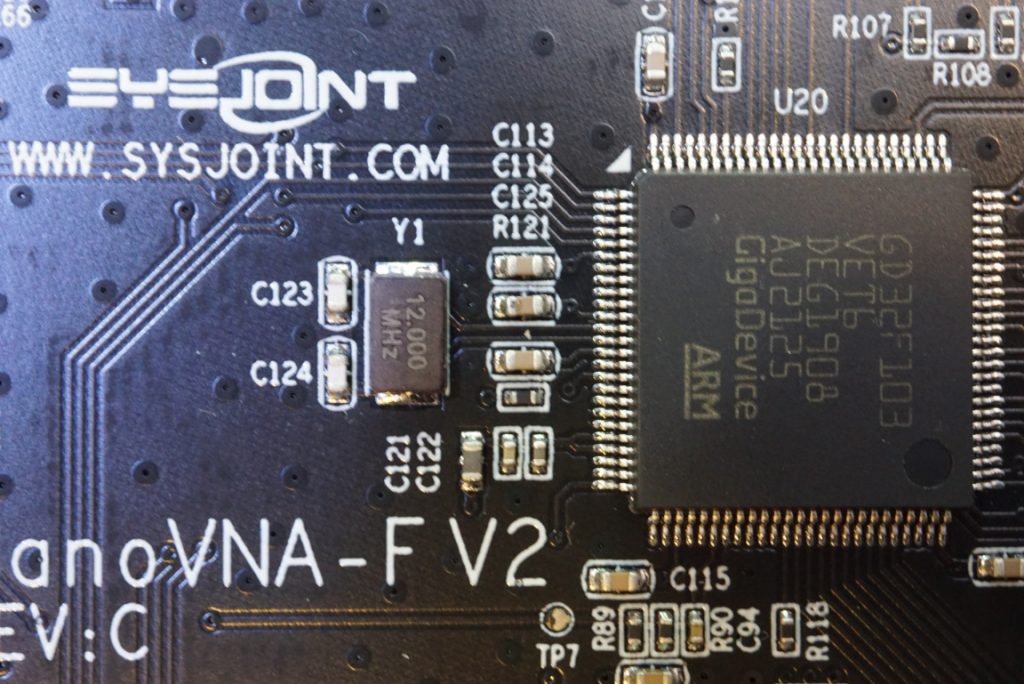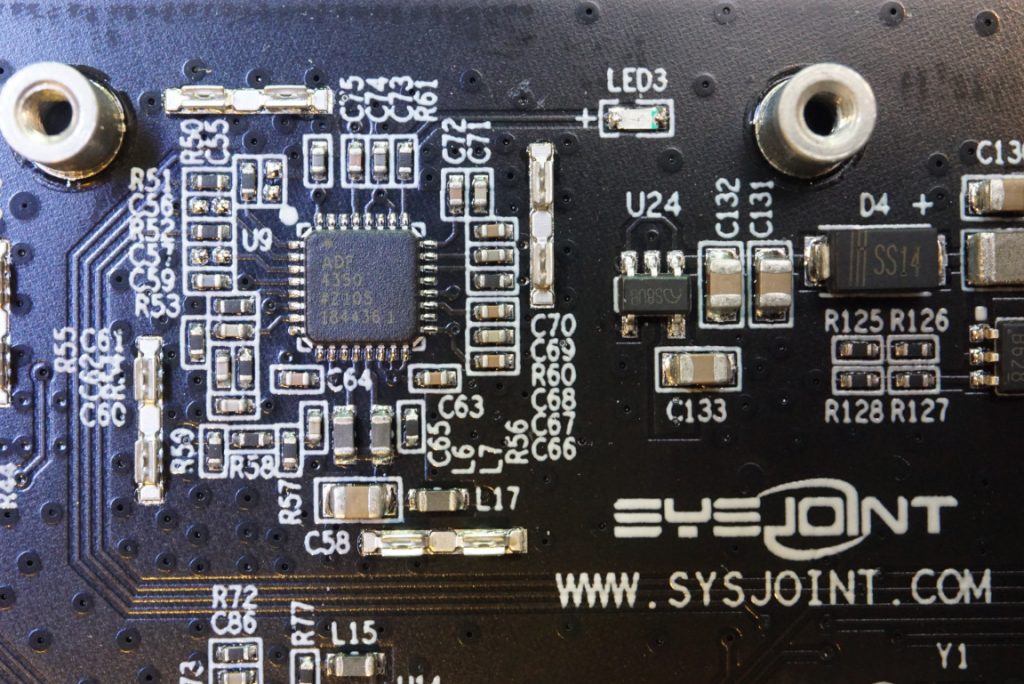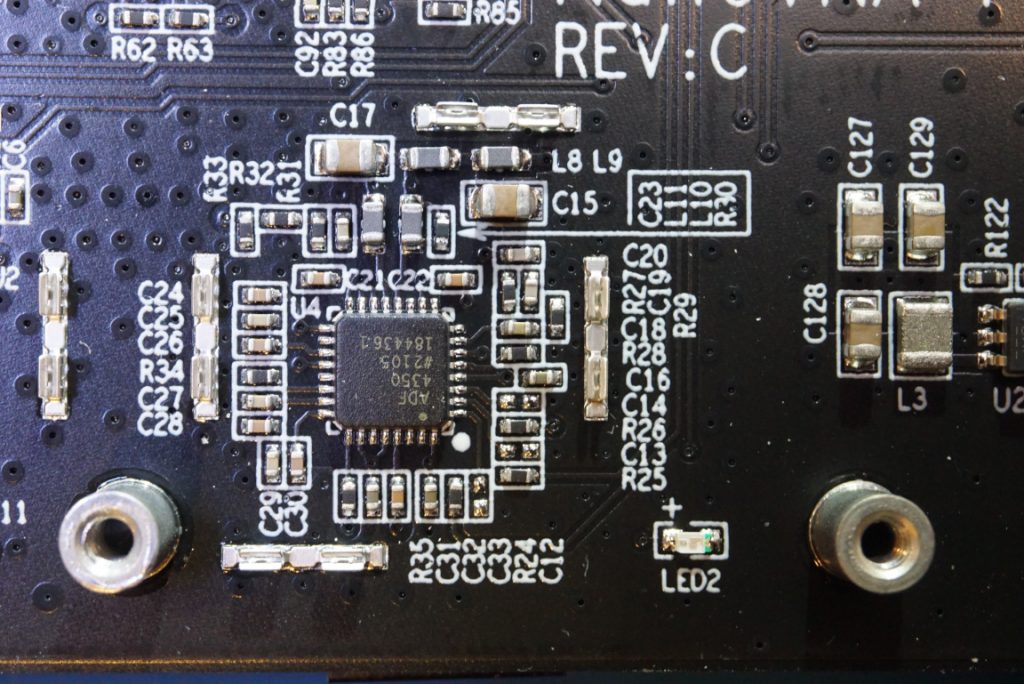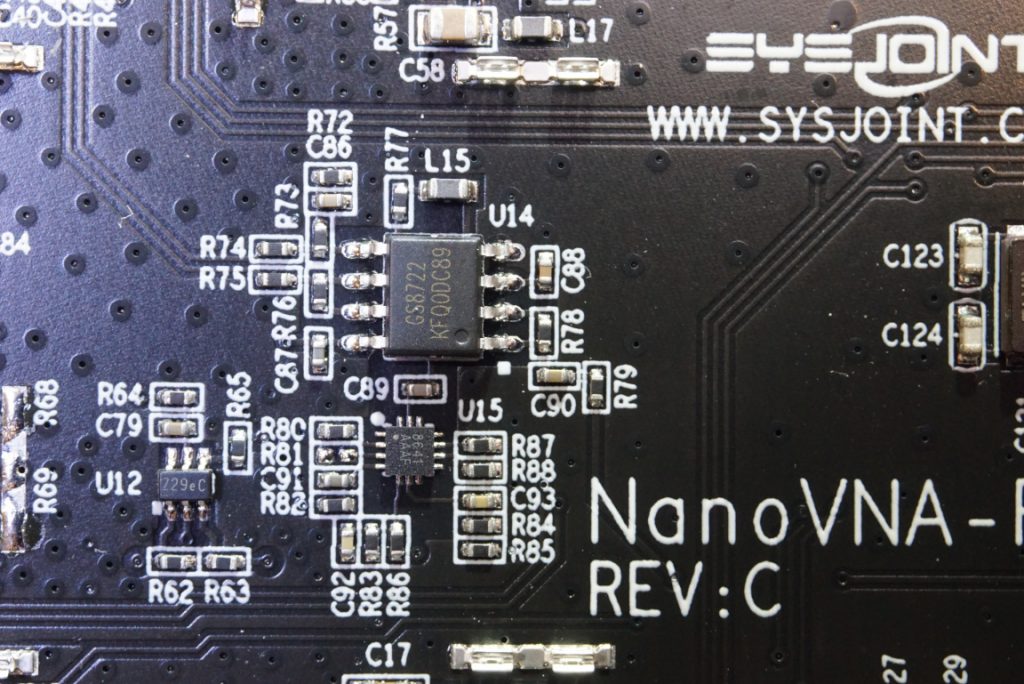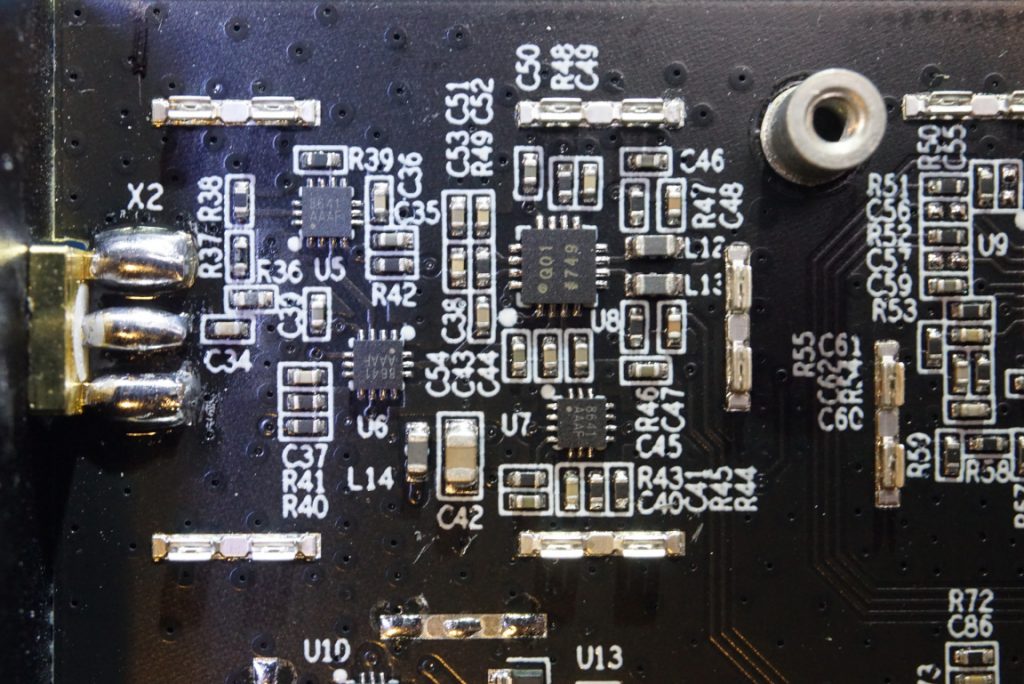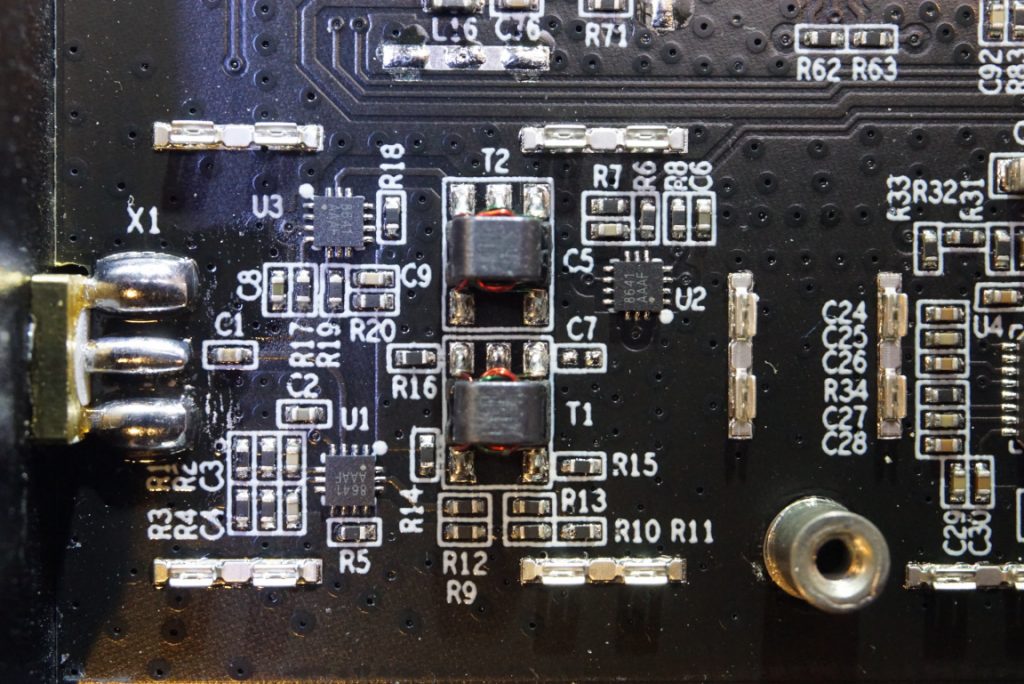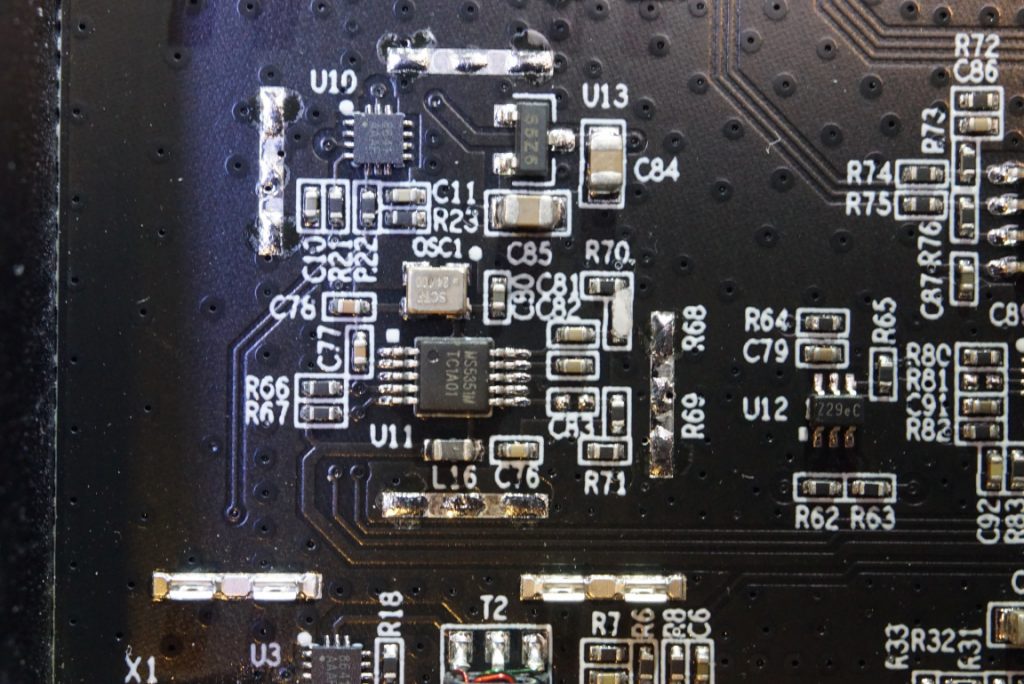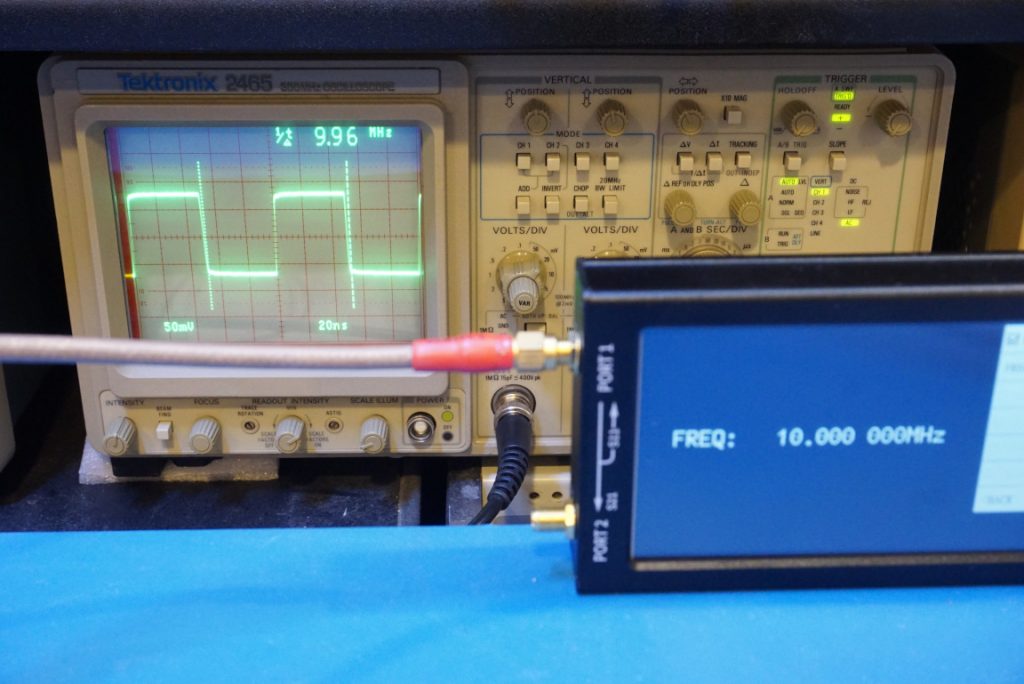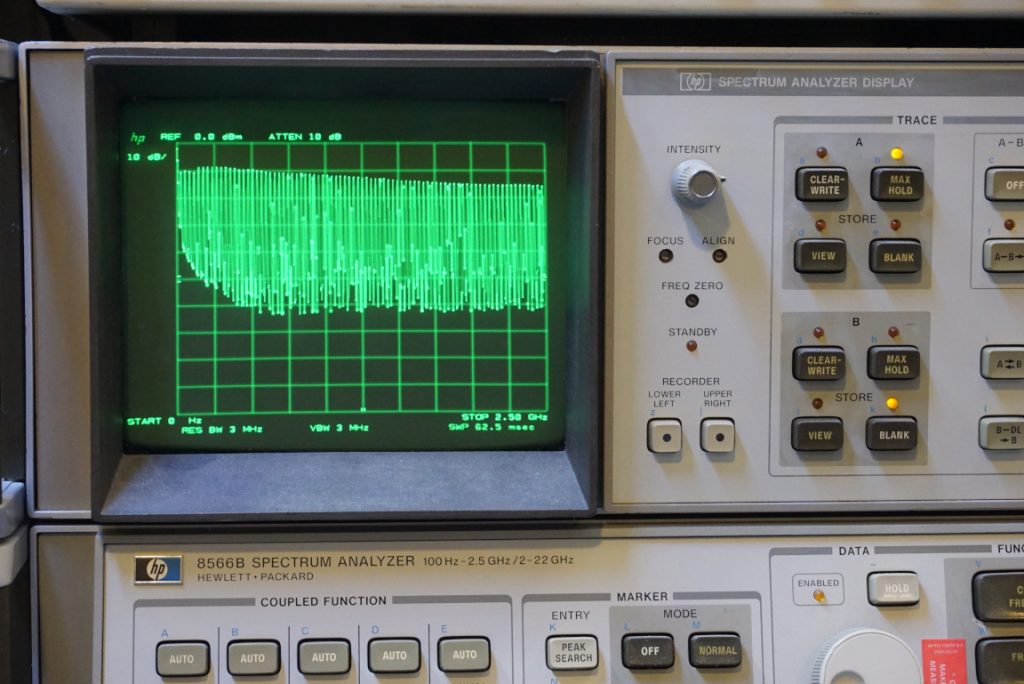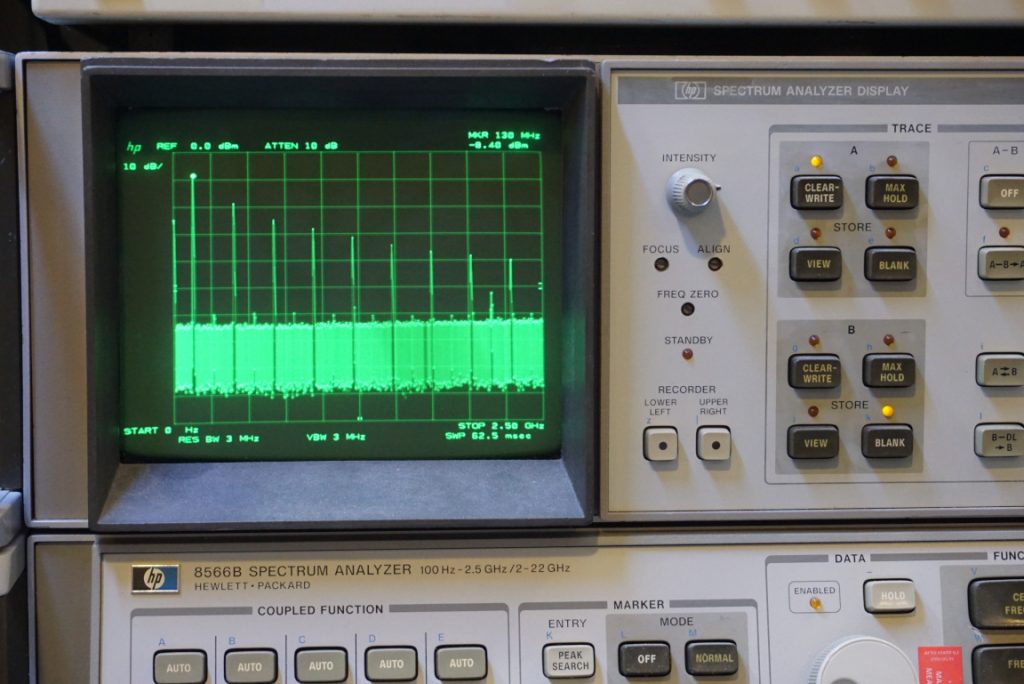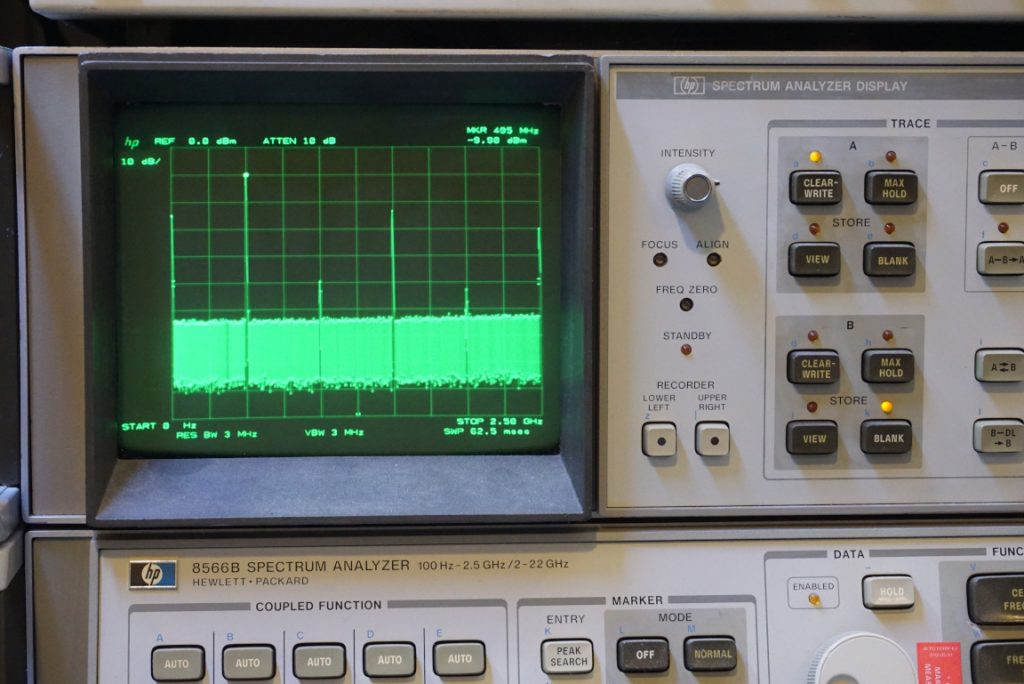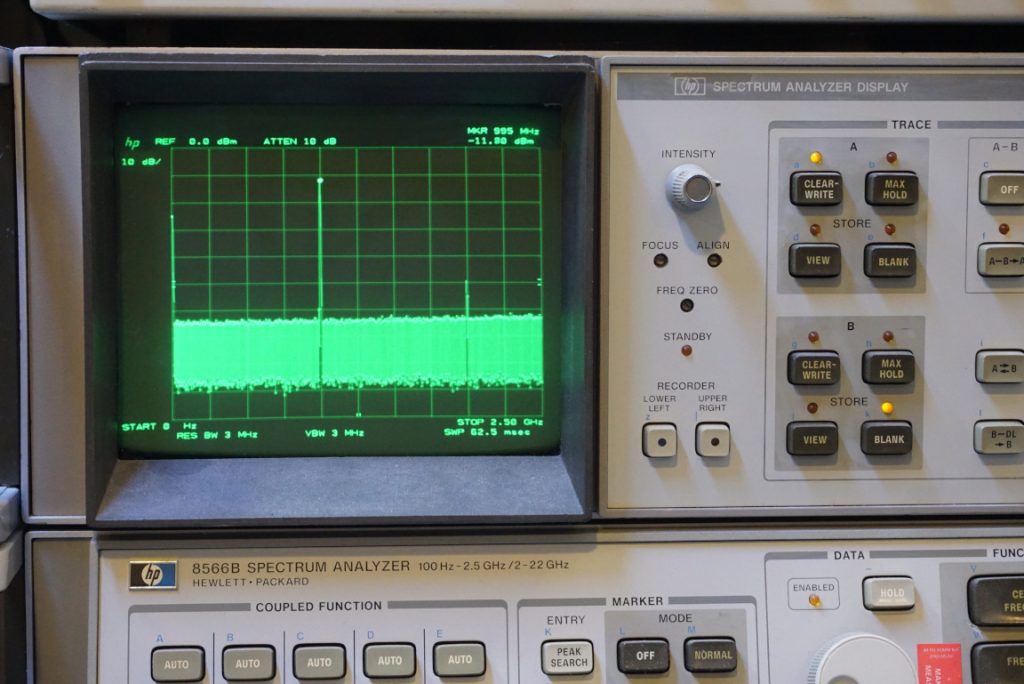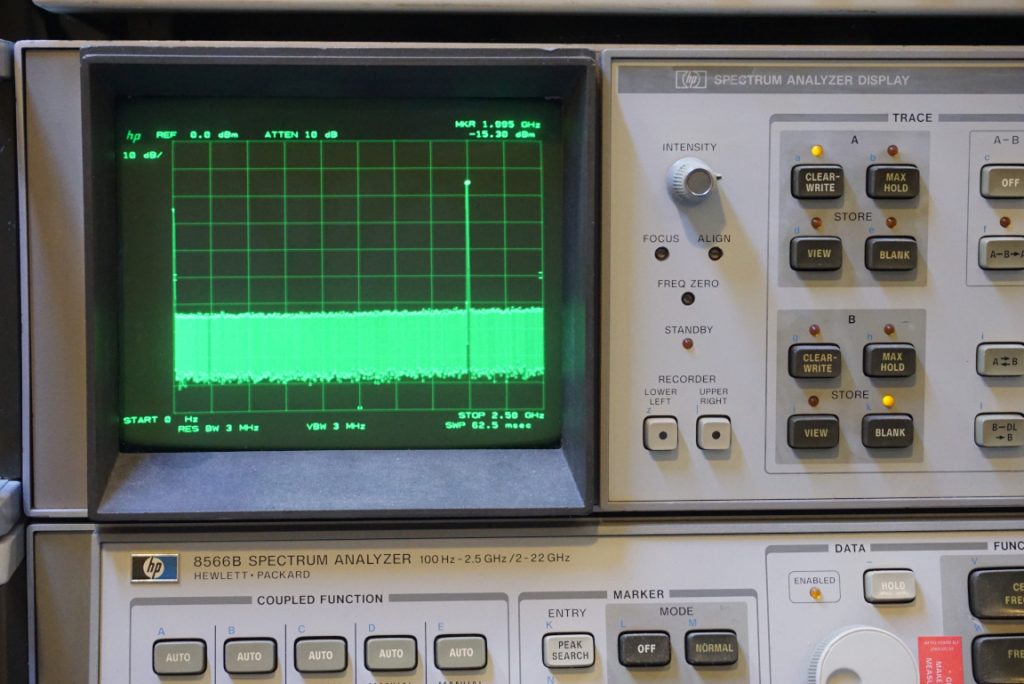Recently, I got my hands on a NanoVNA-F V2 made by SYSJOINT. It features a large 4.3 inch touch screen and compared to other NanoVNAs of similar specs (50 kHz – 3 GHz), this one appears to be very well made and came with lots of quality accessories. It boasts a 5 Ah Lipo battery that allows continuous use up to 7 hours. In this blog post, I will share some of the teardown pictures and take a look at its signal generator capabilities. A link to the video review is included towards the end.
The NanoVNA-F V2 is enclosed in a beautiful aluminum case, with a diagram on the back clearly illustrating the relationship among the different S parameters in a two port network.
The LCD touch screen is placed on one side of the PCB as you can see in the picture to the left below. Judging from the four wire traces on the LCD we can tell that this touch screen uses 4-wire resistive sensing. On the same side of the PCB you can also see what is presumably an I2C header and a programming header. On the other side of the PCB, there is a large Lipo battery (19 Wh) mounted on a riser board.
Once the riser board for the battery is removed, you can see the main circuit board as shown below.
And here is a picture of the main board with the shielding cans removed. The shielding cans were clipped on rather than soldered on making their removal an easy task.
The picture to the left below is a close-up of the battery management section of the circuit. Here you can see an IP5306 charging and discharging controller chip that handles both the battery charging and power bank functionality. The picture to the right is a close-up of the bottom right corner of the circuit board. Here you can see a buzzer and an unidentified 8 pin chip, which unfortunately had its markings sanded off.
Moving towards the middle section of the mainboard, here you can see the touch screen controller chip XPT2046 for controlling the 4-wire resistive touch screen. Next to the touch controller, there is a 25Q16 16 MB flash memory chip that is used to store the firmware and calibration data. The main MCU used in this NanoVNA is a GD32F103, an ARM Contex-M4 microcontroller.
In this NanoVNA-F V2 there are two ADF4350 wideband synthesizers, one for each port. AD4350’s output frequency ranges between 137.5 MHz to 4400 MHz. It also has an integrated VCO builtin.
In the middle of the main board between the two ADF4350’s there is a GS8722 rail-to-rail opamp that serves as the base band amplifier after the signals from port 1 and port 2 are mixed with the LO. Below the GS8722 opamp there is a 8641 RF switch (SP4T) for switching the signal paths. There are quite a few of these 8641s on the circuit board.
To the left below is the circuitry around the S11 port. There is a chip marked Q01, I am not entirely sure what it is. The other three chips are all 8641 RF switches. The picture to the right below is the circuitry around the S21 port. Again you see three 8641 switches. There are two RF transformers, presumably they are implemented as a directional coupler.
Between the S11 and S21 sections of the circuitry there is a MS5351M I2C CMOS clock generator. This is similar to Skyworks’ Si5351. This chip is responsible for generating the LO frequencies for the mixers.
The NanoVNA-F V2 can be used as an RF signal source. Although the output waveform is square wave which has very high harmonics content.
The RF output power is also not entirely flat across the entire frequency range, the picture below shows the max-hold sweep between 50 kHz and 2.5 GHz and you can see a roughly 5 dB drop in amplitude towards the higher end of the frequency range. This also illustrates why it is important to calibrate the desired frequency range prior to making any measurements.
In the remaining three pictures, you can see the output set at 500 MHz, 1 GHz and 2 GHz with the output power set at 0 dBm. At 2 GHz output frequency, the amplitude dropped by about 5 dB, which is consistent with what we saw in the sweep output above.
In the video linked below, I reviewed the NanoVNA-F V2 and did a few experiments with it. A teardown is also included towards the end.
